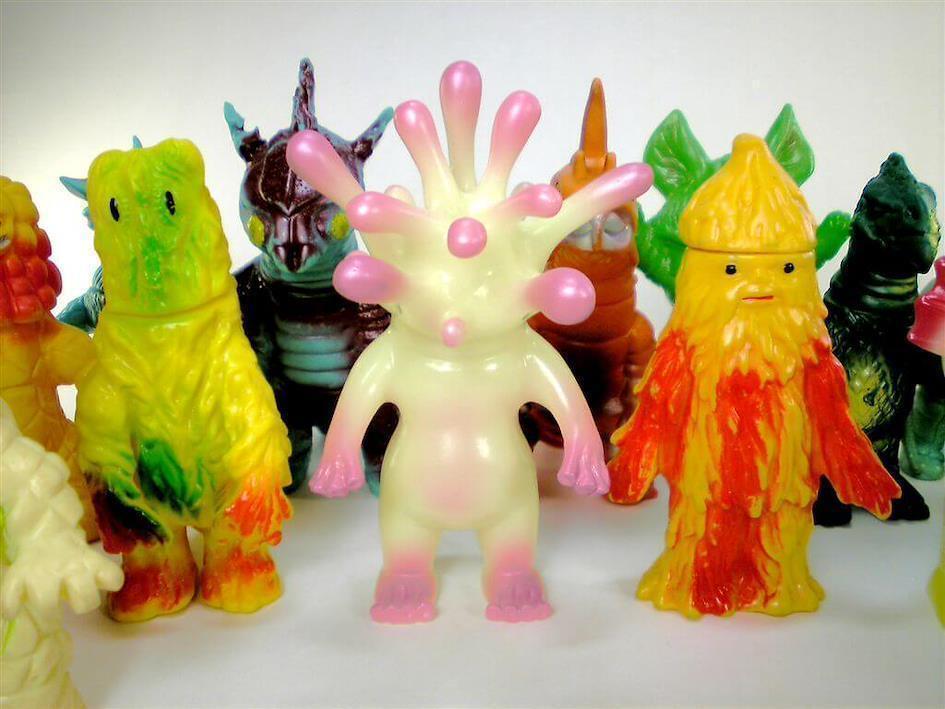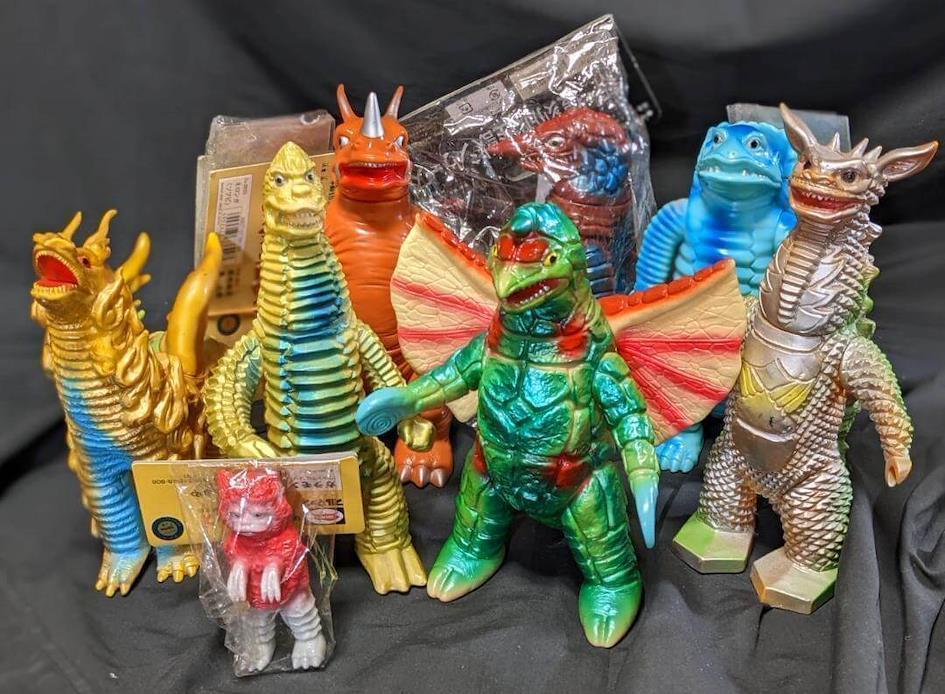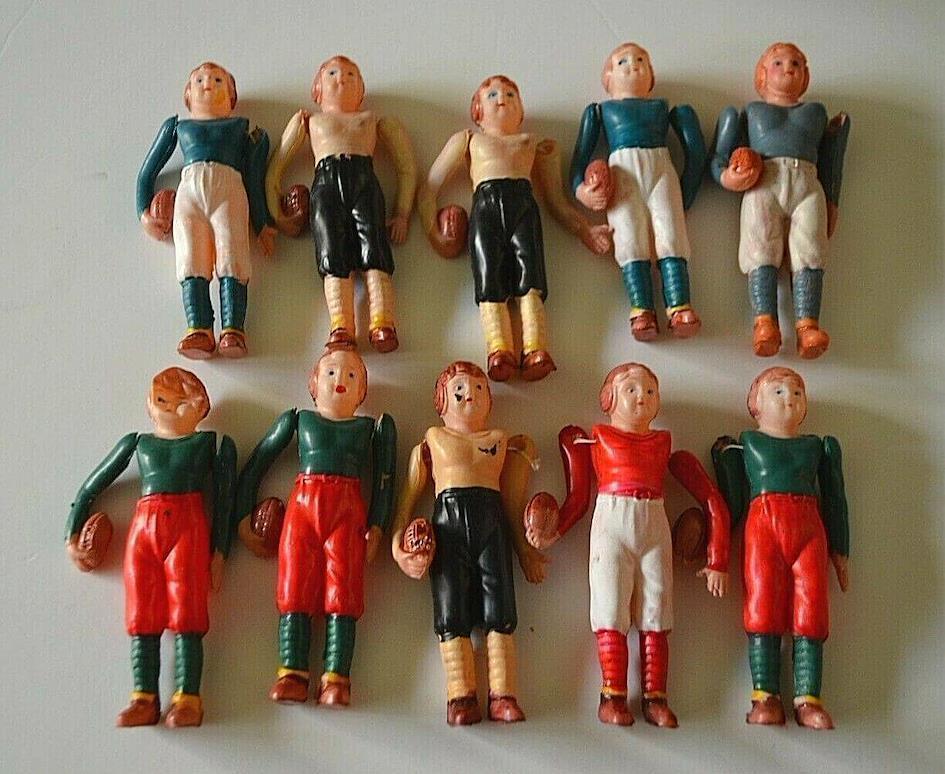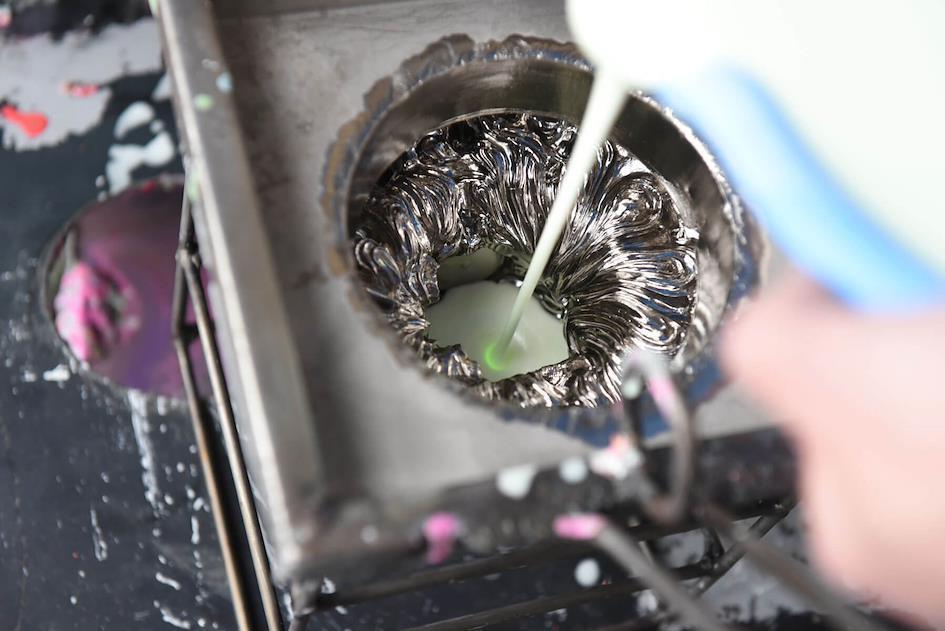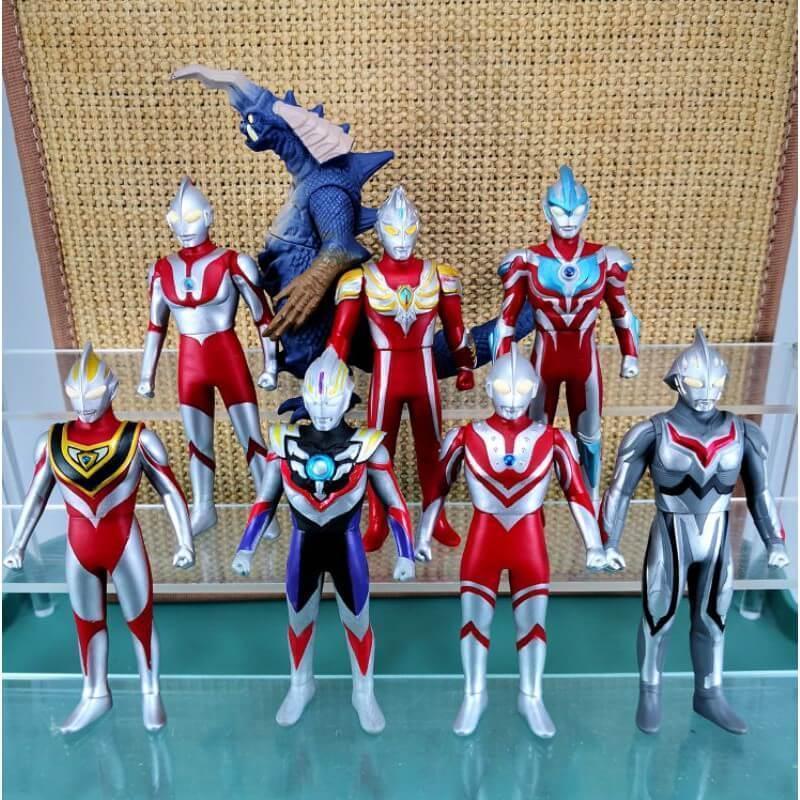[ad_1]
Japan is well-loved by toy collectors. They have produced figures based on iconic Japanese franchises, such as Ultraman, Godzilla, Mobile Suit Gundam, Mazinger Z, Voltes V, and many more, which are mainstays in any toy collection. However, one Japanese toy design has been trending with toy collectors due to their rarity and unique design. These toys are nonother than sofubi.
Sofubi are soft vinyl toys based on Kaiju, superheroes, Japanese folklore, and various Japanese pop culture icons. They are based on the design and manufacturing process of soft vinyl toys made in Japan in the 1950s. Today, they are extremely rare collector’s items sold by indie artists and big companies.
In this article, we will walk you through the basics of sofubi. We’ll tell you what they are, how they are made, and who manufactures and sells them. We’ll also guide you through the rich history of sofubi, including when they made their first appearance and how they evolved into what they are today.
What are Sofubi?
Sofubi (ソフビ) is a type of collector figure from Japan. The term sofubi originates from the Japanese words “sofuto” (ソフト) and “biniru” (ビニル), which literally translates to soft vinyl. They are sometimes called “sofvi” or “soft vinyl.”
Sofubi has a unique style that truly evokes the Japanese vintage aesthetic from the 1960s to the 1980s. At a glance, they resemble vintage Japanese toys based on Kaiju and Tokusatsu characters.
Most Sofubi created today feature original designs based on different elements of the Japanese tradition, such as Japanese folklore. Many sofubi even have psychedelic designs that truly make them stand out from other collectibles.
Unlike most toys and collectibles, Sofubi aren’t mass-produced products. Instead, they are handcrafted by artisan toy makers with years of experience. With this regard, sofubi is so valuable for many collectors since they are an art form capable of capturing the artist’s intent through a three-dimensional object.
Also Read: A Summary Of Godzilla Movies: 1954 – Now
Modern sofubi are created by independent artists and larger Japanese toy manufacturers. Some toy manufacturers and high-profile sofubi artists even occasionally team up to create truly one-of-a-kind limited-edition collector’s items.
In addition, since sofubi aren’t mass-produced and are hard to manufacture, they are usually only sold in certain batches. Even sofubi sold by the big companies are hard to get and are usually sold out. Given all these factors, sofubi greatly appeal to the global audience as unique Japanese collector’s items.
History of Sofubi
Japan has a long history with soft vinyl toys. In the 1950s, Japanese toy manufacturers started experimenting with soft vinyl material. The goal was to create products that were more durable and affordable than the celluloid toys that were popular at the time.
During the 1960s, Godzilla became extremely popular in Japan, giving rise to the Japanese Kaiju craze. Soft vinyl toys were perfect for capturing the look and texture of Kaiju, easily making them some of the most popular toys of that era.
Throughout the 1970s and 1980s, the Tokusatsu (Japanese special effects) superhero genre also became very popular. Japanese superheroes, such as Kamen Rider and Ultraman, further increased Sofubi’s popularity.
Also Read: How To Buy Figures (And More!) From AmiAmi Japan
Since sofubi were originally created to be exported to the US toy market to help with Japan’s post-war efforts, Japan’s sofubi toys were popular globally. However, sofubi popularity would die down once Japanese companies started outsourcing to Chinese factories for mass production.
In the 1990s, sofubi became big again through the rise of the Japanese street culture movement. Fashion brands, such as Beams, started re-releasing Ultraman figures.
In addition, designer sofubi made by small independent artists flourished. Today, both big companies, such as Medicom Toy and Max Toy, and small independent artists sell and produce sofubi.
How are Sofubi Made?
Compared to other collectible figures, the sofubi creation process is a lot more complex. Original sofubi designs created by independent artists start from a prototype design.
The artist designs and sketches the character using traditional or digital tools. The initial design then gets converted into a physical or 3D model, which will be used to create a physical model made of wax.
This wax model gets melted into a hollow metal model using electroplating. This hollow metal model is then used to create multiple copies of the final product. At this point, a process called rotational molding is used to pour liquid vinyl into the metal mold.
This technique allows manufacturers to create highly complex and detailed shapes. The final process involves painting the sofubi through various methods to achieve its final look.
The overall process of crafting sofubi requires specific equipment and personnel specifically trained at creating sofubi. As a result, sofubi aren’t mass-produced and are only released in limited batches.
Why are Sofubi so Popular?
There are many reasons why sofubi has become a mainstay in toy collections. These include its nostalgic design, rarity, cultural aspect, and prestige. With how popular the retro trend is these days, it is no wonder that sofubi has also quickly risen in popularity.
As mentioned earlier, Japan eventually stopped manufacturing sofubi using the traditional method and instead opted to mass-produce toys via overseas factories. As a result, kids who grew up with sofubi stopped seeing them for decades.
According to Manami Okazaki from Tokyo Weekender, artists such as Takeo, who grew up with Japanese icons such as Ultraman and Godzilla, started making sofubi as it reminded them of the toys from their childhood.
Another reason for sofubi’s success is their rarity. Given how hard they are to manufacture, most sofubi batches only come with ten to twenty pieces. Given how rare they are, passionate fans enjoy the thrill of hunting and collecting sofubi.
Sofubi is also an essential part of toy culture. The interactions of various toy communities through social media and toy conventions have helped the hobby grow to what it is today.
Also Read: What Collectors Need To Know About Japanese Retro Gaming
And lastly is the prestige of sofubi. According to popular sofubi artist Teresa Chiba, sofubi are similar to traditional Japanese folk toys. They have a certain aspect of “looseness” that makes it evident that they were created by humans and not manufactured by machines in factories.
In essence, sofubi aren’t just toys. They are an art form designed and created rigorously by artisans who have spent years perfecting their craft. Owning a sofubi means owning a special piece of art that is not easy to acquire.
[ad_2]
Source link


